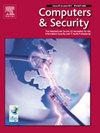鲁棒和可重用的LINDDUN隐私威胁知识
IF 4.8
2区 计算机科学
Q1 COMPUTER SCIENCE, INFORMATION SYSTEMS
引用次数: 0
摘要
隐私威胁建模本质上是一项复杂的分析任务,需要在复杂的隐私威胁、其危害和影响以及潜在的缓解方面的专业知识。为了支持新手和专家在分析中获得所需的严密性和完整性,诸如隐私威胁树和威胁示例之类的支持材料至关重要,因为它们巩固和协调了威胁特征的完整范围,并有助于更广泛地采用隐私威胁建模实践。然而,在隐私威胁分析中使用的现有知识结构、分类法和树在实践中被证明是有限的。它们要么过于宽泛和通用,要么与特定的建模方法(dfd)或特定的威胁引出方法(例如,每个元素)耦合得太紧。此外,当前的隐私威胁知识结构存在语义模糊性。最后,现有的结构过于僵化,无法支持进化,从而阻碍了对新出现的隐私威胁的整合。本文介绍了解决这些缺点的三个贡献:(i)定义了以威胁类型、引出标准、示例和附加元数据的形式表达威胁知识的元模型;(ii)讨论了其在linddun隐私威胁建模框架的隐私威胁知识中的应用;(iii)引入了由提取逻辑组成的自动化知识管理工具,它允许在不同的隐私分析方法中更灵活地采用,并且从根本上支持这种隐私威胁知识的持续进化和改进。一个主要成果是更新了linddun隐私威胁知识,它完全包含了早期版本,并为采用、改进和持续发展提供了更根深蒂固的支持。本文章由计算机程序翻译,如有差异,请以英文原文为准。
Robust and reusable LINDDUN privacy threat knowledge
Privacy threat modeling is an intrinsically complex analysis task that requires expertise in sophisticated privacy threats, their harms and implications, as well as potential mitigations. To support both novices and experts in attaining a desired degree of rigor and completeness in their analysis, supporting materials such as privacy threat trees and threat examples are crucial as they consolidate and harmonize the complete spectrum of threat characteristics, and as such assist with the broader uptake of privacy threat modeling practices.
However, the existing knowledge structures, taxonomies, and trees used in privacy threat analysis prove to have limited use in practice. They are either too broad and generic, or too tightly coupled to a specific modeling approach (dfds) or to a specific threat elicitation method (e.g., per-element). In addition, current privacy threat knowledge structures suffer from semantic ambiguity. Finally, existing structures are too rigid to support evolution, thus hindering the incorporation of emerging privacy threats.
This article introduces three contributions to address these shortcomings: (i) it defines the metamodel to express threat knowledge in the form of threat types, elicitation criteria, examples, and additional metadata; (ii) it discusses its application to the privacy threat knowledge of the linddun privacy threat modeling framework; and (iii) it introduces the automated knowledge management tools comprised of extraction logic that allows more flexible adoption in different privacy analysis approaches, and that fundamentally supports continuous evolution and refinement of this privacy threat knowledge. A major outcome is the updated linddun privacy threat knowledge which completely subsumes earlier versions and provides more rooted support for adoption, refinement, and continuous evolution.
求助全文
通过发布文献求助,成功后即可免费获取论文全文。
去求助
来源期刊

Computers & Security
工程技术-计算机:信息系统
CiteScore
12.40
自引率
7.10%
发文量
365
审稿时长
10.7 months
期刊介绍:
Computers & Security is the most respected technical journal in the IT security field. With its high-profile editorial board and informative regular features and columns, the journal is essential reading for IT security professionals around the world.
Computers & Security provides you with a unique blend of leading edge research and sound practical management advice. It is aimed at the professional involved with computer security, audit, control and data integrity in all sectors - industry, commerce and academia. Recognized worldwide as THE primary source of reference for applied research and technical expertise it is your first step to fully secure systems.
 求助内容:
求助内容: 应助结果提醒方式:
应助结果提醒方式:


